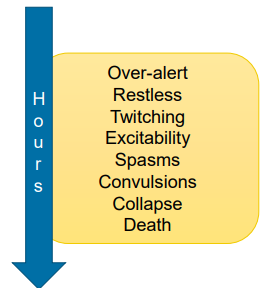Sheep husbandry part 2
1/14
Earn XP
Description and Tags
• Describe the basic feeding management of sheep • Describe the key feeding times of sheep • Explain how to practically prepare feeds for sheep • Select suitable feeds for the specific times in production cycle • Give examples of food intake for a sheep in lamb based on bodyweight • Give examples of specific micronutrients that are key for sheep
Name | Mastery | Learn | Test | Matching | Spaced |
|---|
No study sessions yet.
15 Terms
how do we assess sheep nutrition?
body condition
lactation is hard on them so need more food

what is flushing for tupping?
» Flushing of ewes 6 weeks before going to the ram
» Increasing plane of nutrition to promote fertility
» Increasing nutrition= greater no. of eggs ovulated
Ram BCS important pre-tupping
Rams lose condition when serving ewes as too distracted to
eat well.
Aim for tups to go into tupping at BCS 3.5/4
Overfed/fat Rams
Low libido and reduced fertility
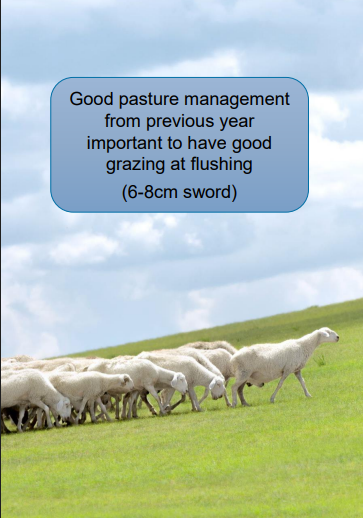
what do we need to do in early-mid pregnancy of ewes?
Aim to maintain a level plane of nutrition
Placental growth and functionality of placenta
increases, foetal growth is slow during this time
Good grazing +/_ supplementation with hay or
haylage during winter/frozen ground
Losing more than 0.5 body condition will affect
placental growth and foetal development
Increasing body condition score can lead to vaginal
prolapses and lambing problems
generally sheep dont like copper supplementation cos they can easily get toxicity - but if you avoid too much they can get sway back - indiciator of copper deficiency in the ewes - essentially demylenation of the nerves - paralysed animal never gets better have to put down :(
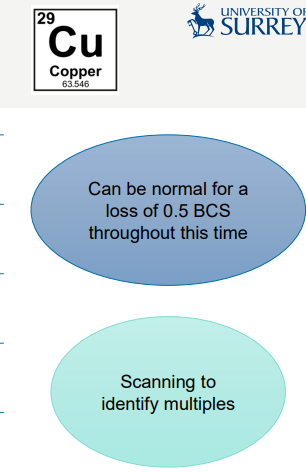
how do we manage late pregnancy to lambing?
• Foetus grows rapidly and udder
development/colostrum production
• Monitoring ewe condition to make changes, if
needed before lambing.
• Takes ewes 4 weeks to gain 0.5 BCS so these
changes are slow.
• Additional forage +/- concentrates may be started
6-8 weeks pre-lambing
What happens when the ewe has poor nutrition?
• Metabolic disease at lambing
• Poor colostrum production
• Weak small lambs at birth
• Poor milk production
through lactation
=
• Increased lamb losses
• Increased ewe losses
• Poor lamb growth
what are the feeding considerations around lambing?
» Growing foetus means smaller rumen capacity
» Less intake of dry matter from forages
» Increased requirement for concentrates for energy
remember split concentrates cos too much not good for rumen - increasee concentrate amount slowly to allow gut microbes to accomodate
ewes with low calcium is bad, magnesium levels mut be good too
Other considerations- Trough space Housing according to BCS/ Multiples?
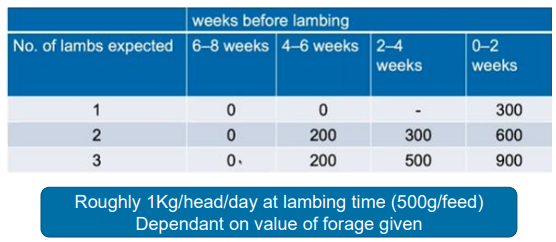
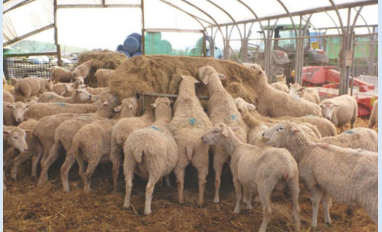
what can we see here?
the pushier ewes who want milk more and feed will end up bigger and healthier costhey access teats better
ones at the back are skinnier less fed
what about this?
lambs can equally be fed
but can get stuck
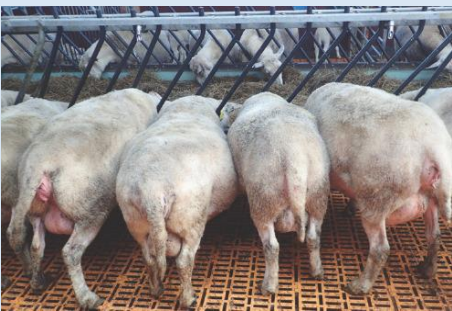

whatbout this
best way
space and equality
what we should be aware of
we need good silage
Applies to grass as a forage
too!
Sword length > 5cm may not
require concentrate feeding
Sword <4cm = concentrates
Sword<3cm forage and
concentrate supplementation
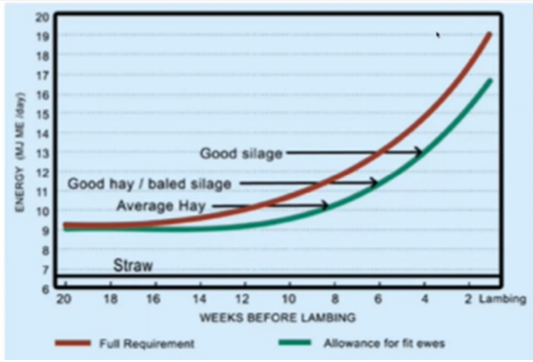
summarise lactation
two animals to consider
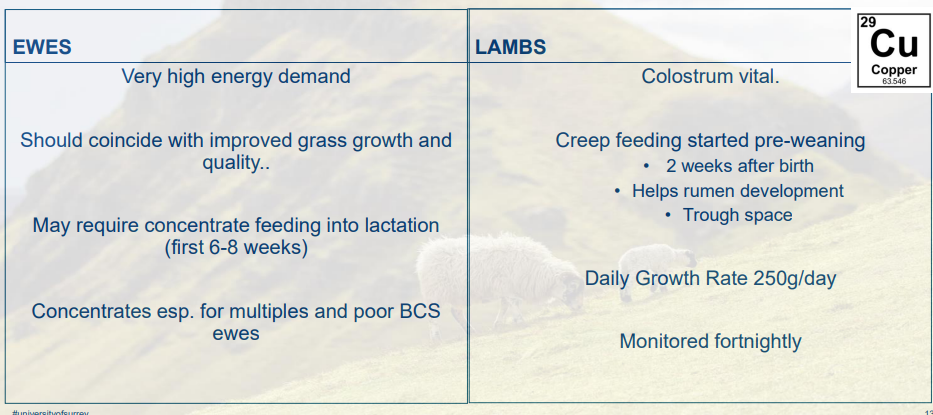
weaning

why is cobalt important
B12 and krebs cycle
energy
❖ Essential component of Vitamin B12
❖ B12 in energy metabolism
❖ B12 produced by rumen microbes if there is
a sufficient supply of cobalt in the diet
❖ Commonly seen in weaned lambs in late
summer/autumn
❖ Confirm diagnosis with serology
❖ Prevention includes parasite management,
boluses for ewes, drenching lambs
e.g. if worms in their stomach can deplete cobalt levels
you cant overdose on cobalt
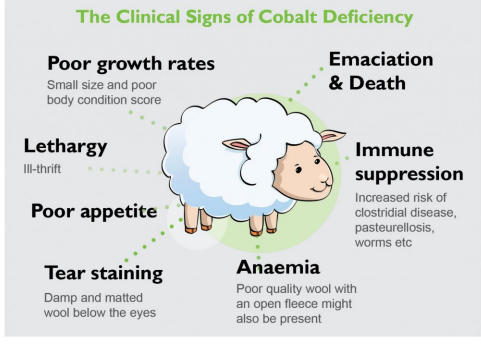
copper deficiency vs toxicity
sheep dont have added copper but horses and cow do in their feed
cos sheep more sensitive to copper
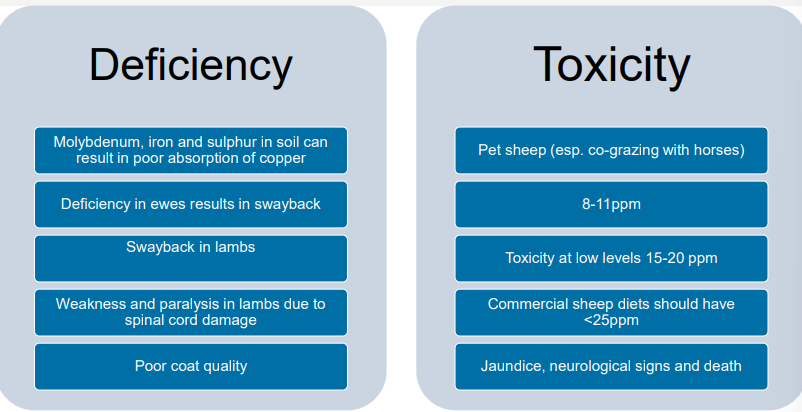
calcium importance in ewes
calcium levels super high just before she lambs
required for all muscle contractions → or else flaccid muscles e.g. rumen wont contract, wont have peristalsis in gut → constipation → cant stand up cos skeletal muscles rely on calcium → heart cant beat properly → can die
➢ Hypocalcaemia
➢ Twin lamb disease complex
➢ Late pregnancy
➢ (Can happen up to 10 weeks after lambing)
➢ Poor nutrition
➢ Result of fast foetal growth and milk
production
➢ Stressful event: extreme weather, dog
worrying/move fields or housing

importance of magnesium
low magnesium → can die within few hours
low in fast growing grass
» Hypomagnesaemia
» Fast growing spring grass low in magnesium - grass staggers?
» Higher requirement for magnesium during lactation
» No storage of magnesium in the body- requires directly on daily intakes
» Stressful events: typically seen after thunder storms/bad weather
• Reduces feed intake
» Nitrogen and potassium applied to fields (fertilisers)
reduce availability of Mg
e.g. if theres a storm sheep too scared to eat outside, and magnesium levels can drop very quickly
can put magnesium flakes in their water
